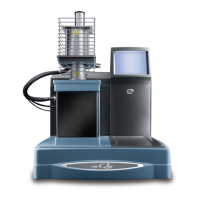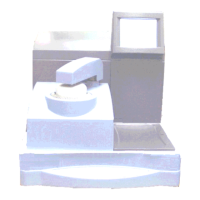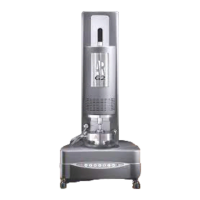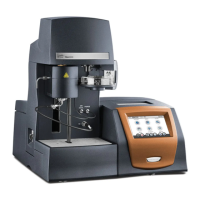DSC Q Series Getting Started Guide
21
Display Touch Screen Options
The Display Options are accessed by touching the Dis-
play key at the bottom of the touch screen. The keys
shown in the figure to the right are displayed.
A brief description of the function of each key is provided
in the table below.
Key Name Description
SEGMENTS Accesses the experimental method that is currently being used for
this experiment.
INFORMATION Displays instrument information such as the software version,
options, and the IP address.
STATUS Displays the three main signals indicating the current status of the
experiment.
SIGNALS Displays the real-time signal data that comes directly from the
instrument. The signals displayed here are customized through the
instrument control software by accessing Tools/Instrument Prefer-
ences.
PLOT Displays a time-based plot of data as it is received from the instru-
ment during experiments.
SCREEN SAVER Allows you to choose a screen saver for the touch screen.
HOME Returns to the opening window.
Q2000/Q200 Display Screen
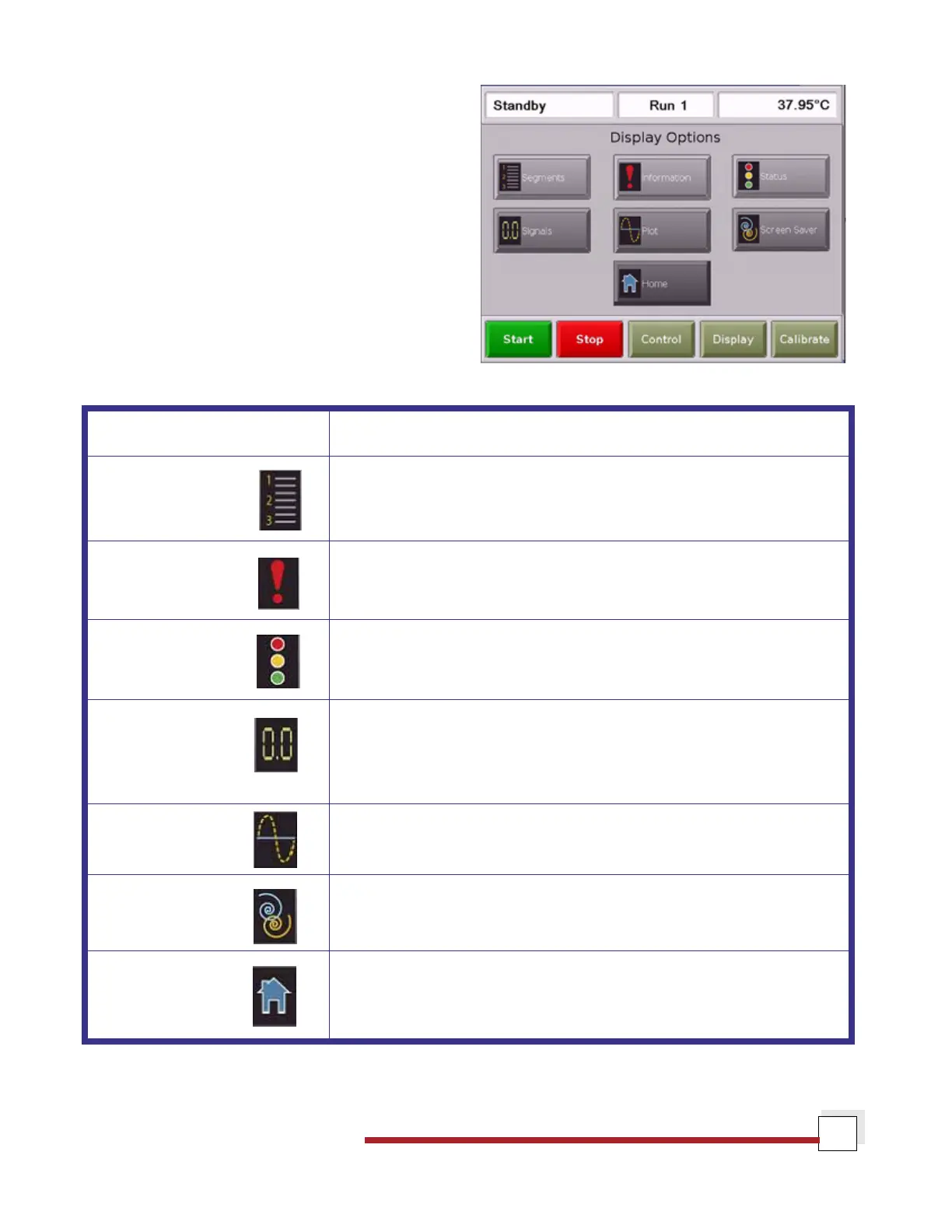